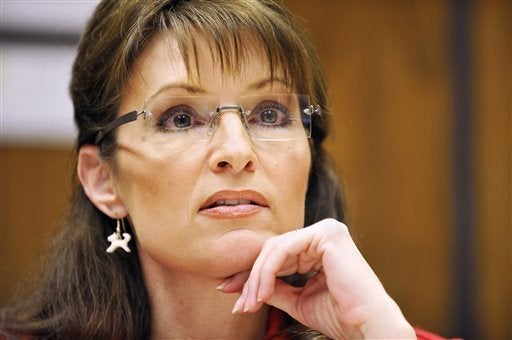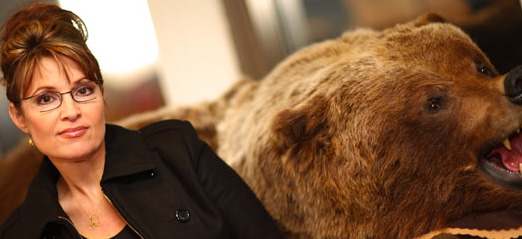
As someone who spent far too much of his youth earning a doctorate in sociology, I wince whenever I see an "academic" study that purports "findings" about the human psyche or human behavior that are all too readily accepted as social gospel.
So it goes with the recent "study" conducted at the University of South Florida by psychologists Nathan A. Heflick and Jamie L. Goldenberg, just published in the Journal of Experimental Social Psychology, which proclaims that among voters focusing on Sarah Palin's appearance there were corresponding "reduced perceptions of competence" of Palin, which in turn "reduced intentions to vote for the McCain-Palin ticket."

In short, they are arguing, that Palin's looks--and the emphasis on her looks promulgated by the U.S. media during the campaign--had a negative impact on the outcome of the election. They also added a caveat:
It is not possible to know whether such effects contributed to people's actual voting behavior the day of the election, as there clearly are other factors that likely swayed voters in favor of Obama-Biden (in this study, all Democrats intended to vote for that ticket). However, given the media's focus on Palin's appearance prior to the election, it is possible that people came to see her as less fully human (more robotic) and competent than they would have without this focus, and in turn, that they became even less likely to vote for her as a result (a more robotic, less competent candidate is certainly less desirable).
Suddenly there are headlines everywhere: "Palin Hurt by a Focus on Her Looks," trumpets the Atlanta Constitution. "New Study Suggests Hot Sarah Palin Should Dowdy-Down for 2012," says the L.A. Times (which HuffPo turned into "Palin's Looks May Have Hurt GOP Ticket"). "Sexy Sarah Palin Needs to Get Ugly to Win in 2012," declares First Post. "Sarah Palin Too Pretty to Attract Voters," says AOL News.
A more thoughtful and in-depth discussion of the issue, "Which Came First: The Objectification Of Sarah Palin, Or The Mistrust In Her Competence?," is located at Jezebel.
As an alumnus of graduate courses in the methodologies of the social sciences taught by a legend in the field, Dane Archer, I've grown to take such studies with a hefty block of salt. Many are predicated on false assumptions or simply bad science. So it is with the South Florida study.
At best, it's voodoo social-psychology. And, of course, the findings have been distorted and simplified by the media into a simple sound-bite: Palin was too sexy for the American electorate.
Let's look at the methodology itself. Heflick and Goldenberg assigned students to jot down a few lines about one of two American women celebrities, Palin or the actress Angelina Jolie. Half of the participants in each category were asked to write "your thoughts and feelings about this person," while the other half were asked to write "your thoughts and feelings about this person's appearance."
The participants were then asked to evaluate their subject (Palin or Jolie) in terms of various attributes, including "competence." Finally, they were asked to identify who they were intending to vote for in the upcoming election.
First of all, the study's sample of 133 undergraduates was hardly large enough for an accurate conclusion to be drawn. Moreover, the sample group, presumably in their late teens and early twenties, is hardly reflective of the American electorate. Generational distinctions cannot even be identified or assessed with this study. Moreover, the sample was heavily skewed toward women (96 females compared to 37 males). While party affiliations were identified, there were no variant markers for race, class or geographical origin of each participant. In purely statistical terms, its reliability is extremely low.
Moreover, the pairing up of Palin with Jolie also reflects significant cultural values and biases by the authors of the study themselves (who state as a matter of fact that "both [Palin and Jolie] are physically attractive"). Nor do they reveal their own political biases. Are they Democrats, Independents or Republicans?
That Palin's candidacy elicited a focus on her appearance cannot be understated. She was dubbed "the hottest governor in the coldest state," and in other circles, the "Caribou Barbie." Time magazine declared her a "sex symbol." The response was clearly sexist and, just as clearly, irrelevant to the discussion of leadership competency.
Let me also acknowledge what I trust should be obvious by now: That women are "objectified" by their looks. I made a documentary film a quarter-century ago (right about the time that Palin was Miss Wasilla) entitled Miss or...Myth?, which addressed the objectification of women through beauty pageants and their implications for larger society. There is no doubt that appearances impact perception.
But in the case of Palin, there are far too many other variables that could well have contributed (both consciously and unconsciously) to this perception of her. Her performances in interviews with Charlie Gibson and Katie Couric scared American voters away in droves. So, too, did the viciousness of her comments on the campaign trail. None of this was mentioned--or addressed--in the study.
That far too much media attention focused on Palin's looks also goes without saying. That didn't happen with any of the other candidates (although Joe Biden's hair plugs certainly got far too much attention, too; as did McCain's age and Obama's race.)

But more importantly, Palin played a role in her own objectification: her decision to appear in Vogue magazine (and participate in an accompanying photo shoot), contributed to her being dubbed "the hottest governor"; her own focus on clothing and hairstyling; and her winking to the cameras. The Republican National Committee also spent upwards of a quarter-million dollars on Palin's clothing, hair and makeup. In short, Palin and the RNC also played the game. She was as much a perpetrator of this response as she was a victim.
Ironically, one of the study's finding was that, in the case of Democrats, Palin's appearance had no impact on their decision to vote for (or against) the GOP ticket. Appearances appeared to play a role only with Republicans and Independents. And "appearances" don't always cut along gender lines; I suspect that studies of the 1960 presidential election would reflect that looks were a variable in the choice between Kennedy and Nixon. Perhaps even for McCain and Obama. Because, let's be candid here, folks, men are objectified around looks, too.
But were they determining or significant variables in the 2008 election? Therein lies the question. And in the case of Sarah Palin, I would argue, those variables were multiple and far more complex than those addressed in the South Florida study. I would argue that Palin's response to Charlie Gibson's questions about her foreign policy experience or her stumbling over a query by Katie Couric about the publications she read were much more significant contributing factors than her choice of clothes, shoes, makeup or hair dye.
